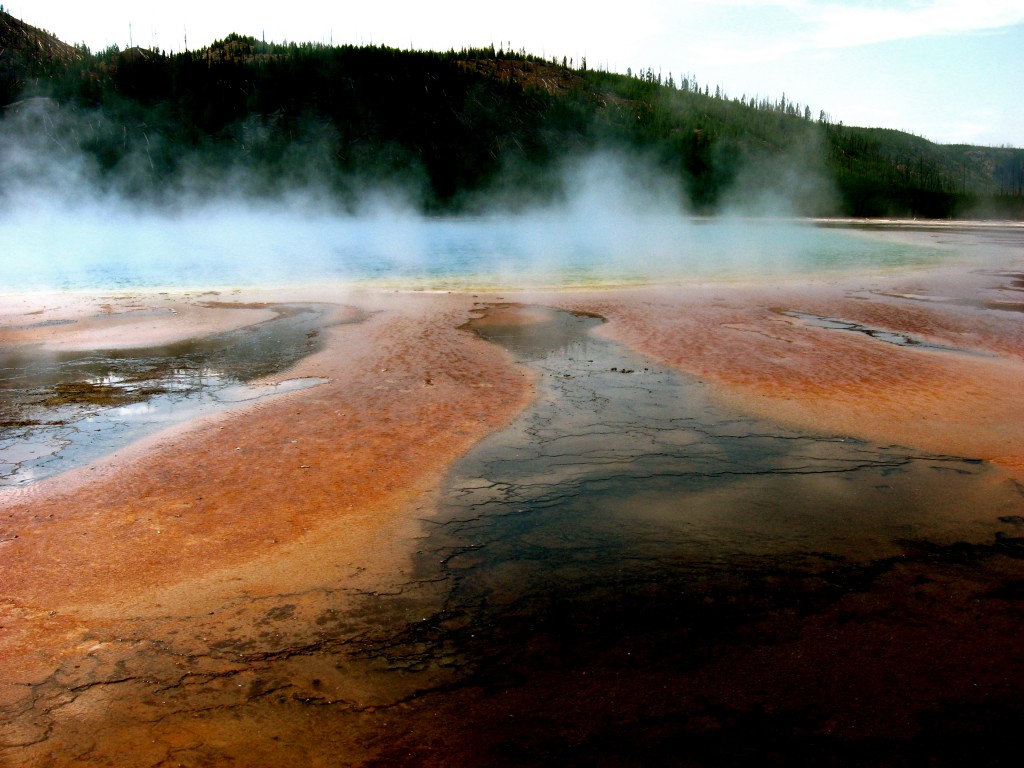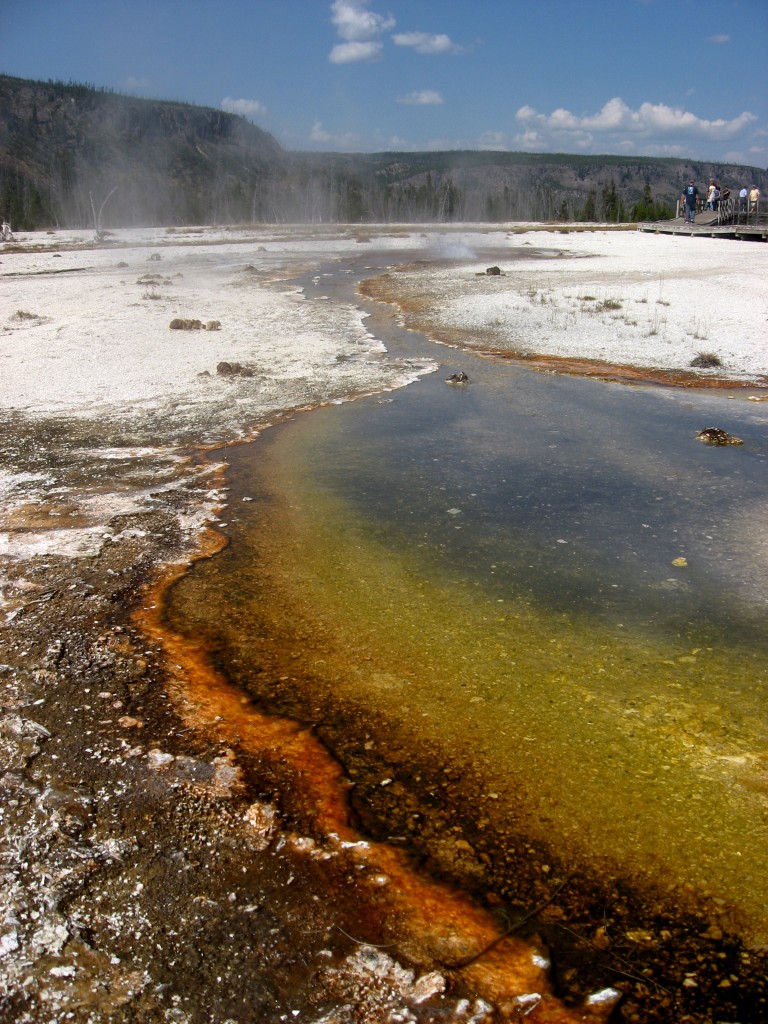8 December 2011
Extreme-living microbes take carbon from the air
Posted by kramsayer

Orange and yellow microbial mats use the iron and sulfur bubbling up in the springs, but new data suggests they collect their own carbon. (Credit: Beth Mole)
Who doesn’t love hot springs—especially the steamy psychedelic springs of Yellowstone National Park?
Poring through the biogeosciences poster session in the Moscone South building on Tuesday at the American Geophysical Union’s Fall Meeting, I ended up in front of James Moran, who is studying the mysterious biogeochemical cycling of the extreme microbes in Yellowstone’s pools. Moran, who hails from the Pacific Northwest National Laboratory in Richland, Wash., is figuring out how the bugs perform simple tasks in boiling, acidic water—including how they get carbon.
Blazing orange and yellow mats of microbial communities layer the beds of Yellowstone’s springs. They’re clearly using up the environment’s iron and sulfur for their energy needs, he said. But they also need carbon and no one understood how the carbon was swirling into the mix.
The research group started out with two hypotheses: the microbes grab hold of carbon on their own from inorganic sources, like carbon dioxide in the air, or they get it from other organisms.

Colorful communities of microbes line the hot springs of Yellowstone National Park. (Credit: Beth Mole)
Moran and his colleagues collected patches of microbial mats from a cluster of springs in Yellowstone’s western Norris Geyser basin. The mats contained around five different microbes, including Metallosphaera yellowstonensis, a heat-loving, acid-hugging, rust-making archaea species with a fully sequenced genome. They already knew it had some genes needed for carbon handling, which was a good sign it might be collecting its own carbon.
Back in the lab, they grew M. yellowstonensis along with gaseous, chemically-tagged carbon and found that the microbes drained that carbon out of the air. When they placed the samples of whole microbial mats into jars with the same tagged carbon, they found the same thing—the microbes were collecting the carbon on their own.
The results, Moran said, clearly show that the microbes are autotrophic, meaning they can make their own food from simple inorganic substances such as carbon dioxide. They’re self-sufficient, he added.
With the new insight into how the microbes survive their colorful, caustic environments, Moran and his team are now off to tackle bigger questions.
“What else are they doing?” Moran wants to know. “Are they the top of the food chain?”
Moran speculated that because microbes can collect their own carbon, they may be able to manufacture and pass on carbon-rich nutrients to other microbes down the line. The researchers pulled their microbial samples from a hot spring that slopes downhill. The slope is streaked with orange and yellow patches, indicating different microbial mats eating up the sulfur and iron in the ground. The carbon-collecting M. yellowstonensis at the top may be critical for the downstream microbes, especially if the downstream mats can’t collect their own carbon, Moran said.
If scientists can understand how microbes share carbon and other nutrients, he said, it could provide insights into geochemical cycling.
-Beth Marie Mole is a science communication graduate student at UC Santa Cruz










 GeoSpace is a blog on Earth and space science, managed by AGU’s Public Information staff. The blog features posts by AGU writers and guest contributors on all sorts of relevant science topics, but with a focus on new research and geo and space sciences-related stories that are currently in the news.
GeoSpace is a blog on Earth and space science, managed by AGU’s Public Information staff. The blog features posts by AGU writers and guest contributors on all sorts of relevant science topics, but with a focus on new research and geo and space sciences-related stories that are currently in the news.
[…] Extreme environments and how somethings survive on carbon […]
[…] Extreme-living microbes take carbon from the air | Geospace […]